In which Sid and Doris walk round the “old town” of Las Palmas, a city with a life outside of tourism, though that’s not what we’re here for.
Our post-replan schedule now gives us only today to explore everything that Las Palmas has to offer. The Little Apartment, despite being tiny and grey and depressing, really is in the Centre of Now as we say in Dubai, and so our Instant Tour Plan is: Laundry, Cathedral, Museum and Market.
Both of our reader(s) will be relieved that we did not take photos in the laundry, although as we believe 100% of our readership own their own washing machines, it is worth noting that public laundries have come on a long way since the coin-slider, detergent-dispenser, plastic laundry-basket, eternal machine-watching world of Sid and Doris’ student days.
Doris says your modern launderette has a central controller taking e-payments and automatically adding detergent/conditioner, as well as telling you exactly how many minutes you can spend in a local cafe having breakfast. Never say that there isn’t progress. 27 minutes of wash, 18 minutes of dry and €9 later we are crisply and fragrantly underway. Nobody ever made an automatic washing machine out of basalt, says Sid.
In the street Sid finds evidence of early civilisation. In 1891 steam trams took over from animal power and with more tourists coming to the island, cleaner electric trams took over in 1910. The line closed in 1937 and the power lines removed. During WW2 diesel and petrol were scarce on the island so a steam service re-started in 1942 to close again in 1947. This piece of track is on Calle Triana, a main shopping area.
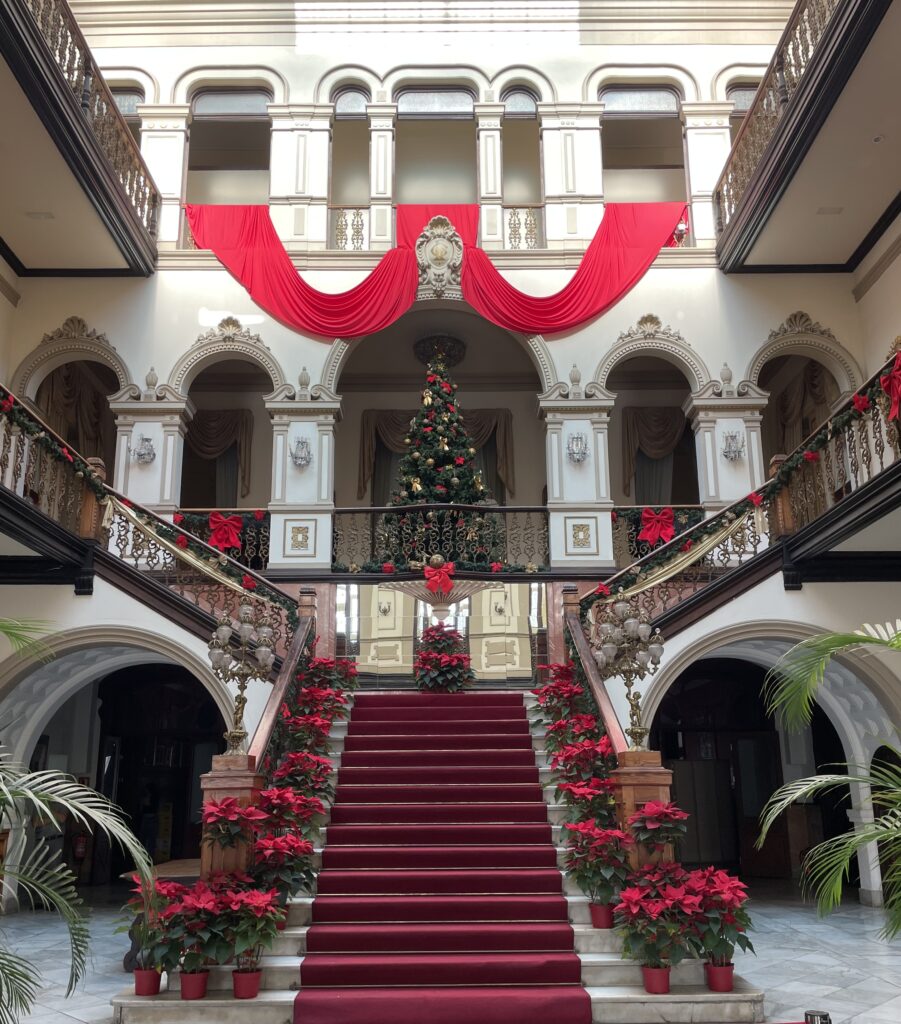 For those of a Northern ilk, such as Sid, this building is the local equivalent of Newcastle’s Literary and Philosphical Society (or the Lit and Phil.) It is now a private club, El Gabinetto, set in the city’s first theatre which opened in 1844. Sid poked his pointy nose in to see the grand staircase set for festivities.
For those of a Northern ilk, such as Sid, this building is the local equivalent of Newcastle’s Literary and Philosphical Society (or the Lit and Phil.) It is now a private club, El Gabinetto, set in the city’s first theatre which opened in 1844. Sid poked his pointy nose in to see the grand staircase set for festivities.
In the cathedral of St Ana the columns have the effect of slender palm trees. The interior feels bright because the glass is not too heavily stained or painted and patches of colour highlight floors and walls. Started in 1500 in Gothic style these arches are barely pointed and there are Romanesque bell towers added later.
Here below a splash of colour by the organ.
And here a reminder at the top of the pulpit steps not to give boring sermons.
Propaganda de la Fé sounds vaguely menacing now but in 1901 only encouraged the congregation to support Rome’s Sacred Congregation for the Propagation of the Faith to those less fortunate than the Canarians.
For those of you who missed seeing Lenin in the Mausoleum in Red Square here is a nicely mummified Bishop of the Canaries, whose unrotted body may be some part of the case for his Beatification. It just shows what an ultra low calorie diet can do for longevity.
We have decided not to ring bells on Easter Friday. No one in this town has a clock. Let us then make a set of boards with hinged hammers so that when we rotate the cross it will make a great racket. Or maybe ring the bells? Anyway, here it is.
The Casa de Colon is a jolly museum about loosely-connected Christopher Columbus, but we tolerate this as Las Palmas still plays a great role in transatlantic sailing as the start venue for the Atlantic Rally for Cruisers.
This is a life size recreation of the stern portion of The Pinta which sailed to the New World with the Santa Maria and Nina. The Pinta was about 65 feet long, which will not be unusual for an amateur’s yacht on the ARC. The Pinta needed to provision for 26 people.
Routes 1 and 4 show how Columbus gradually got the hang of the trade winds circuit.
We all love a good chart.
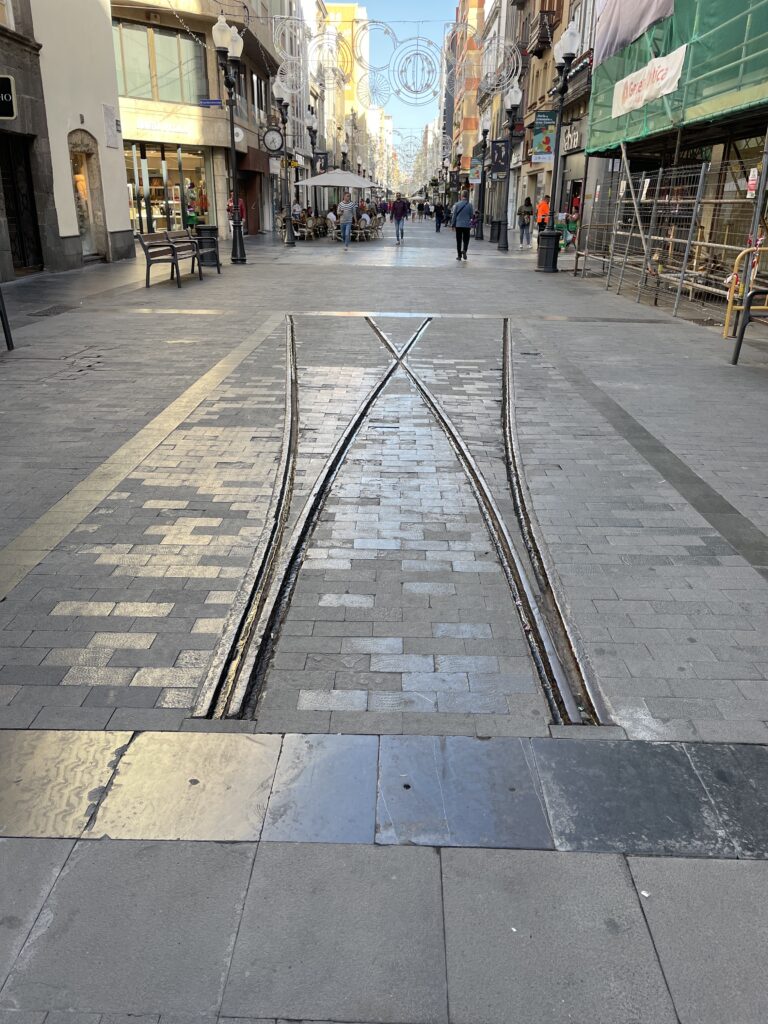
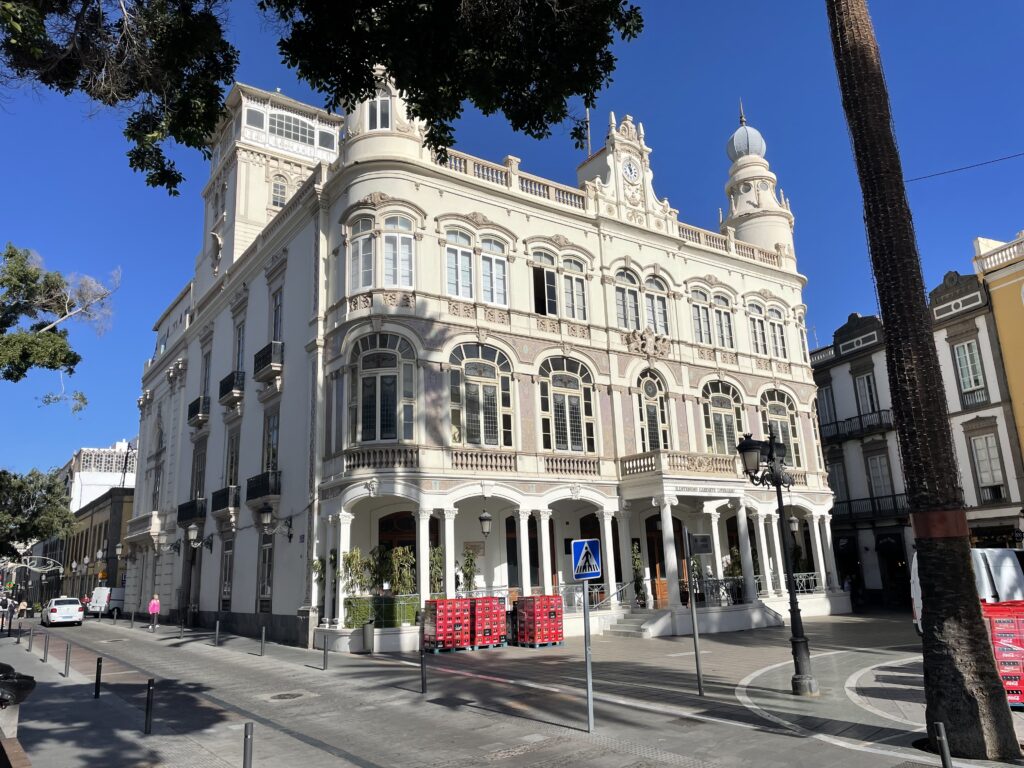
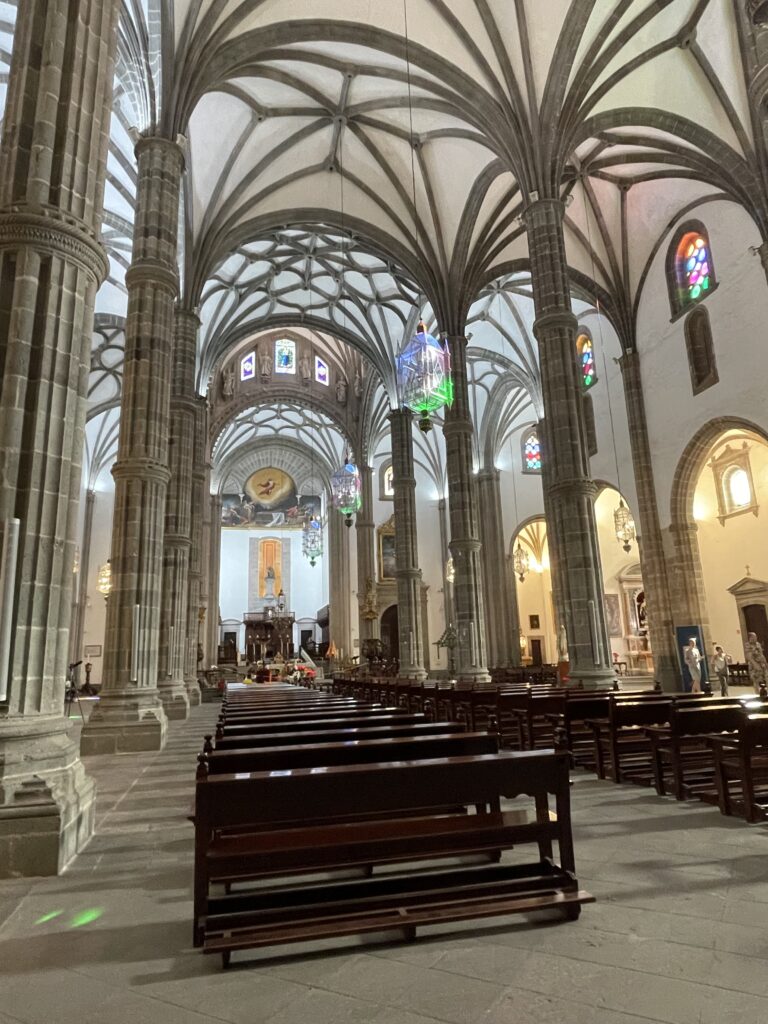
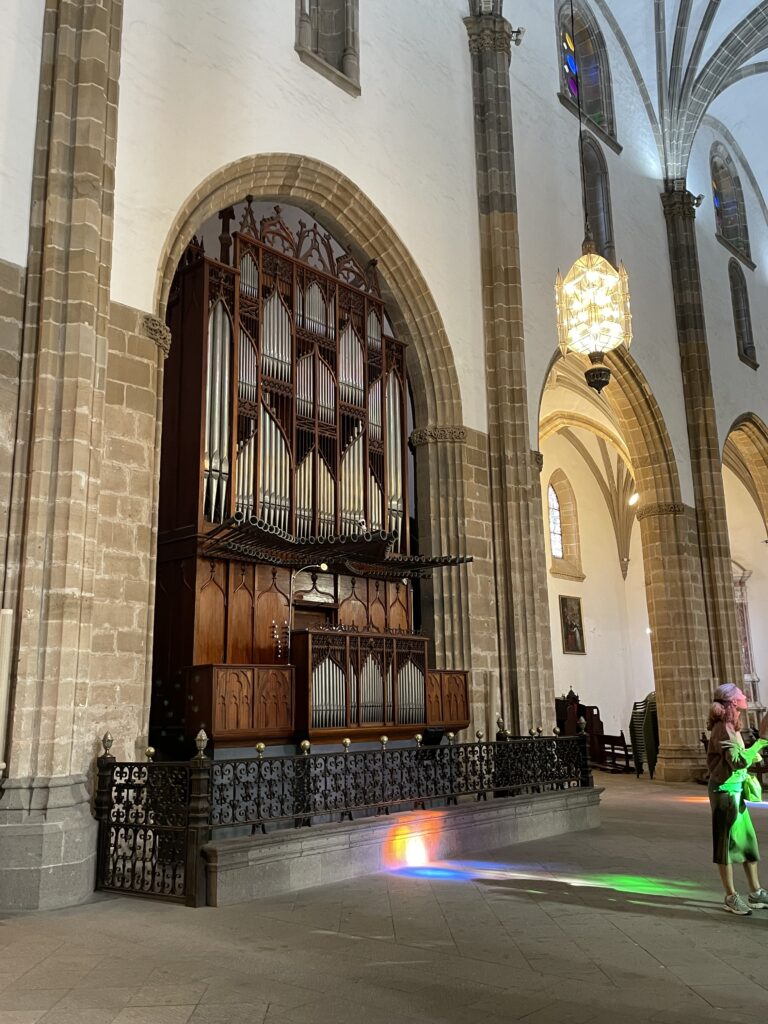
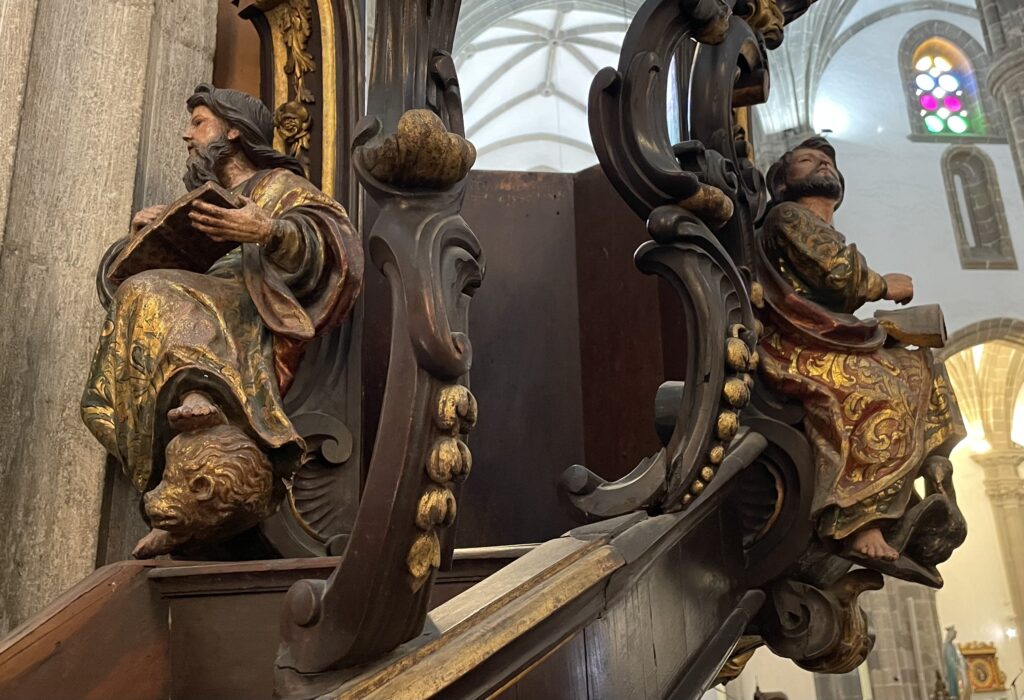
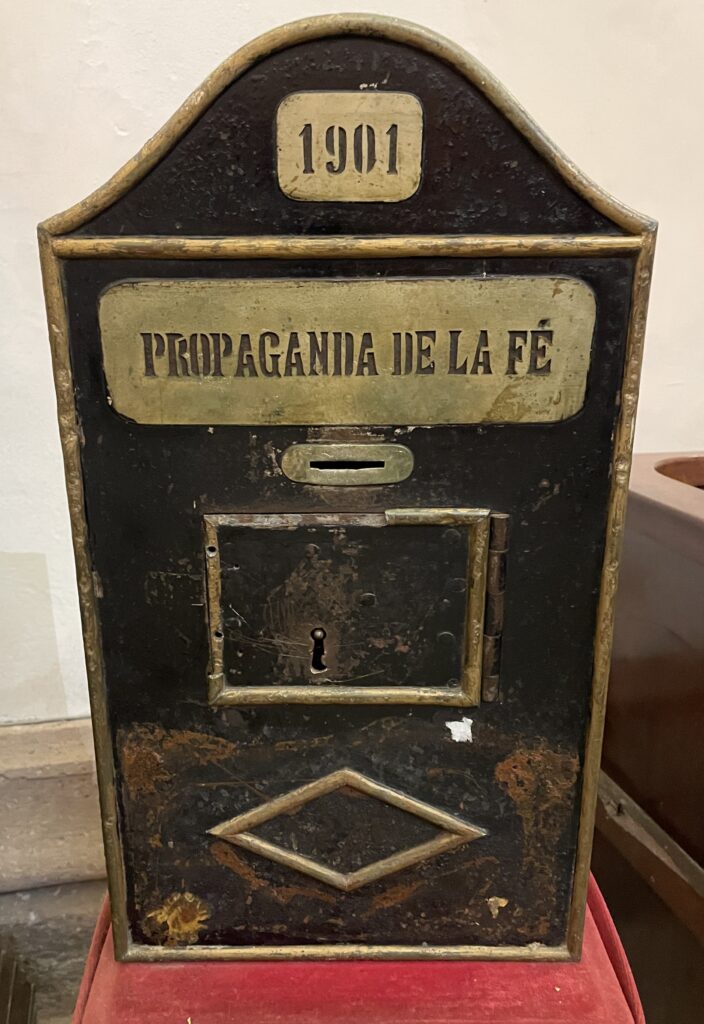
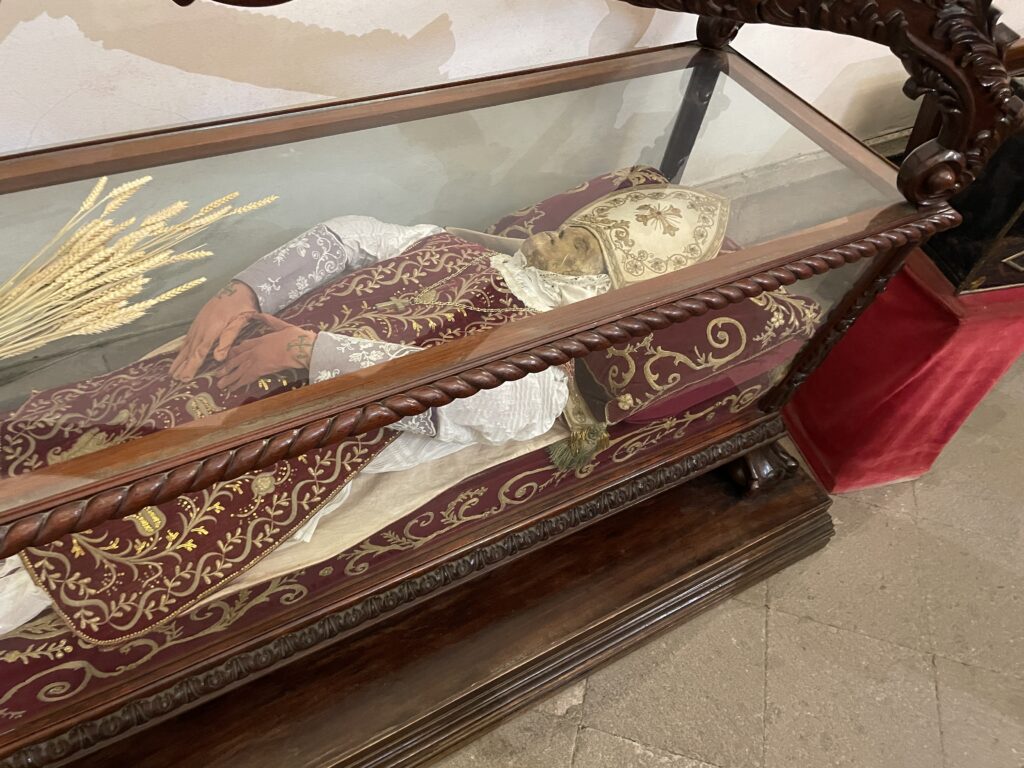
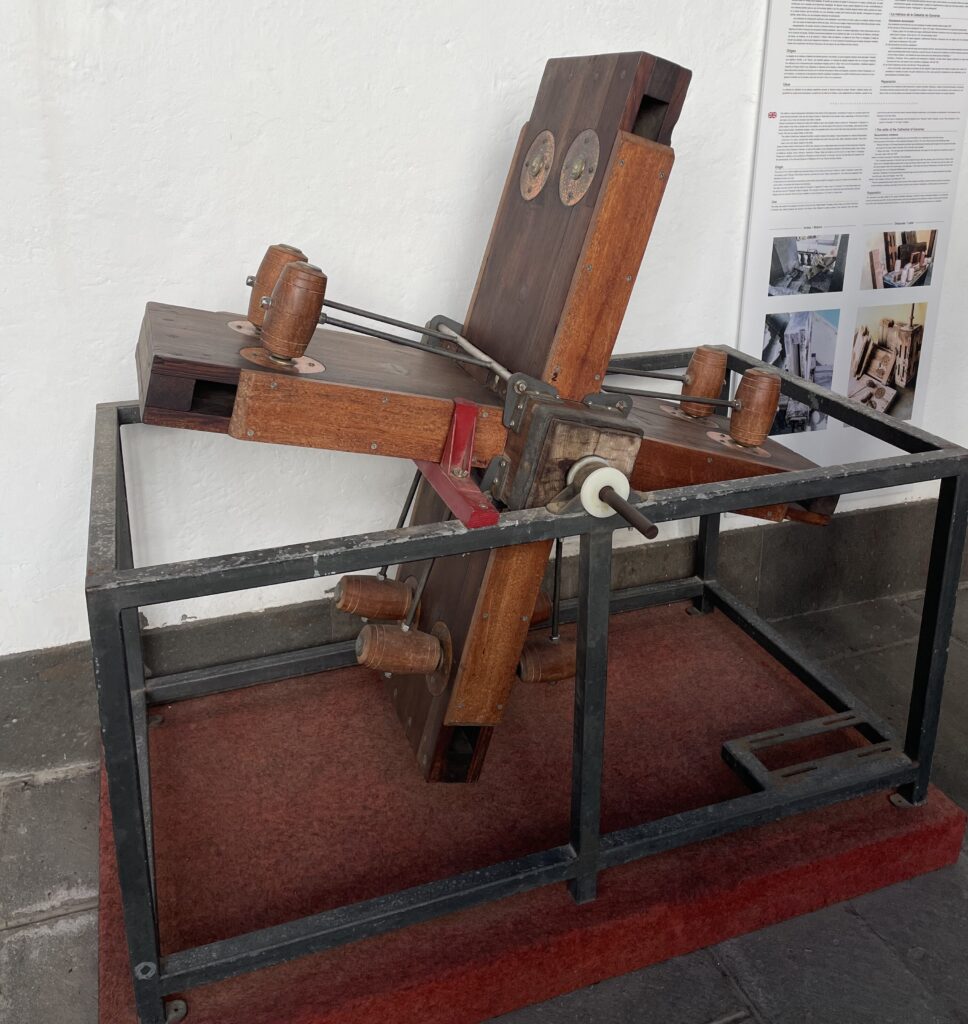
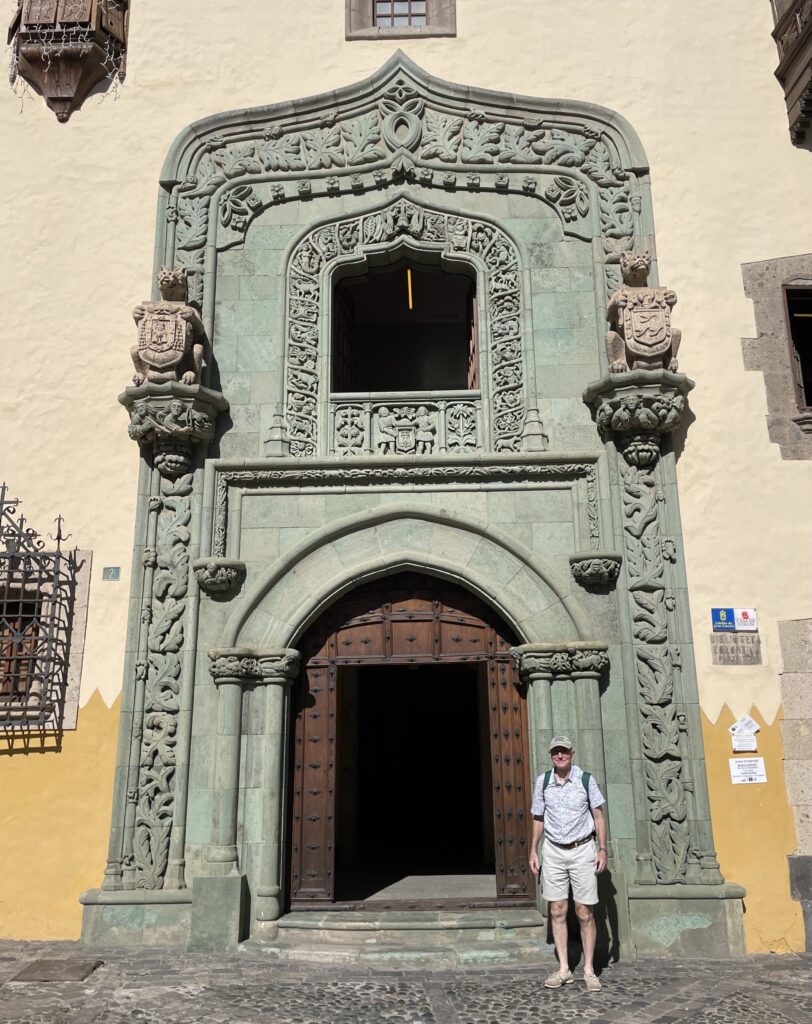

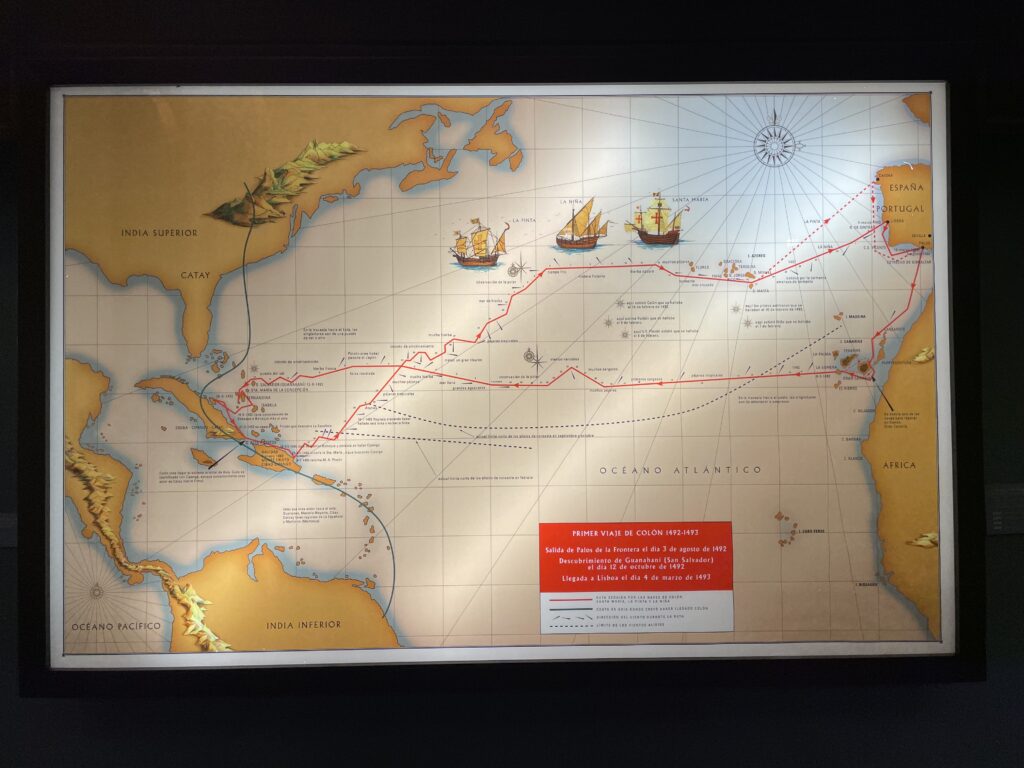
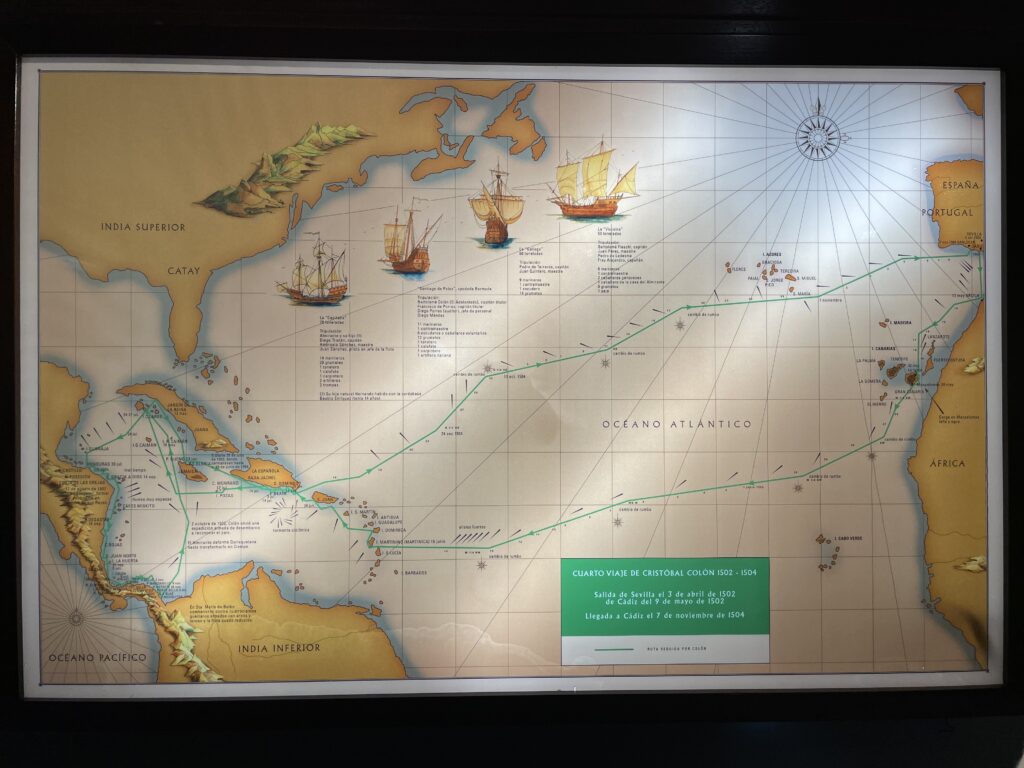
I am pretty sure India Superior and India Inferior were renamed. I write this from Catay…